Suman Malagkit, a popular Filipino delicacy, is a delicious sweet treat that is steamed in banana leaves. Perfect as a snack or dessert, this easy-to-make delicacy is sure to satisfy your cravings with its sticky, chewy texture and sweet flavor.
Best eaten with mangoes in the summer or dip it in tsokolate in the winter.
Love Filipino desserts? Try the fan favorites like Biko, Cassava Cake, or my personal favorite, Buko Pandan.
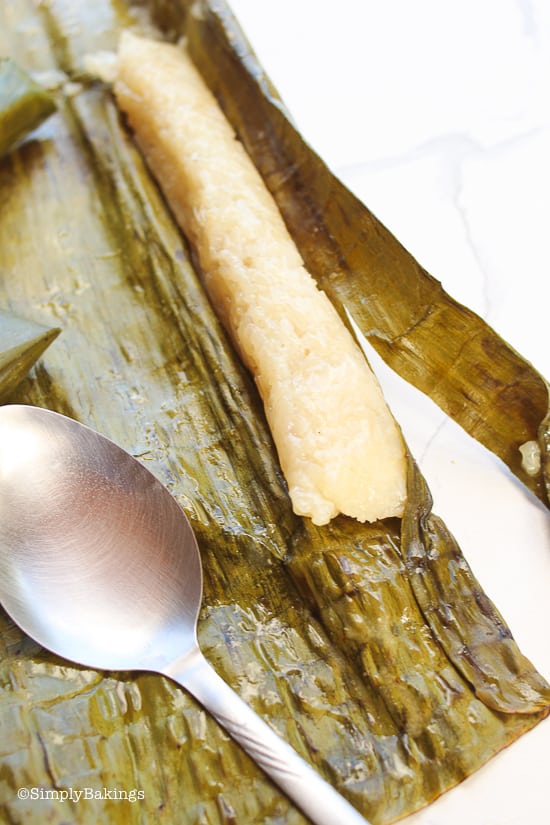
What is Suman Malagkit?
Suman (pronounced soo-man) also called Budbud (pronounce bood-bood) is one of my favorite Filipino snacks/desserts! It's a rice cake usually made from glutinous rice cooked with ginger, coconut milk, and sugar until al dente. Then wrapped in banana leaves and steamed to perfection.
There are so many variations of suman, but it's usually eaten with chocolate powder (hot chocolate mix), sprinkled with brown sugar, mangos, or how my husband eats it- maple syrup.
Tips & Variations:
- It’s essential to start with high-quality glutinous rice. I've tried cheaper versions and I can tell the difference in the quality of rice when eaten.
- Glutinous rice comes in many forms, also check to see if it's sticky rice, waxy rice, botan rice, biroin chal, sweet rice, mochi rice, pearl rice, or malagki- these are the types of rice you're looking for.
- Soak glutinous rice overnight: it will help soften it and make it cook easier.
- Sweeten to taste: Adjust the sweetness of your Suman Malagkit to your liking by adding more or less sugar.
- Use high-quality banana leaves: High-quality banana leaves will give your Suman Malagkit a delicious aroma and flavor. Clean the banana leaves well before using them to wrap the rice mixture.
- Use a pot that will fit the suman snugly, because if not, it will float around or unravel. Use a plate to weigh down the suman to keep it from floating while it boils.
- Serve with dipping sauce: Suman Malagkit is traditionally served with a dipping sauce made of coconut milk and sugar. This adds another layer of flavor to the dish and balances out the sweetness of the rice.
- Storage: Keep in the fridge for up to three days. Freeze for up to 6 months.
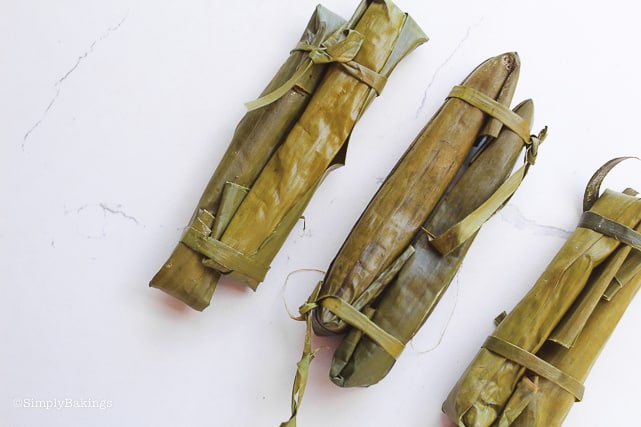
How to Make Suman Malagkit:
Listed below are all the ingredients you will need:
- glutinous rice
- coconut milk
- ginger
- water
- white sugar
- salt
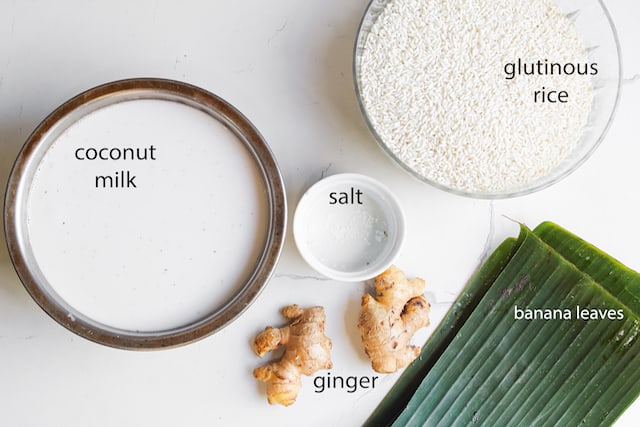
Rinse the rice until the water is clear and then set aside.
In a large saucepan or large wok, add the coconut milk, ginger and bring the mixture to a boil, then reduce to a simmer. Stir continuously until milk solids separate from the coconut milk:
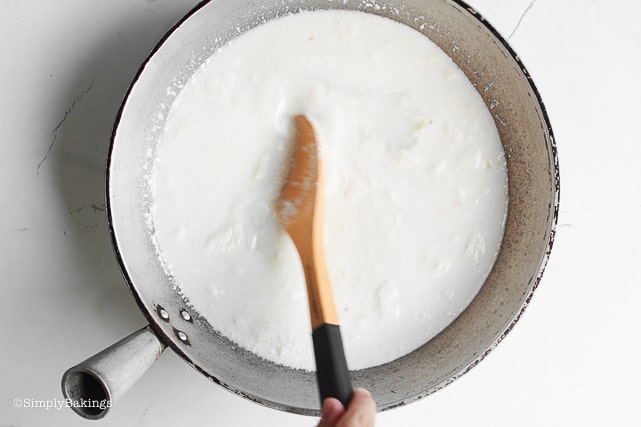
Next, add water, sugar, salt and bring to a quick boil and then reduce to a simmer for 3 minutes.
Add the rice and continue mixing on low heat until the water has been absorbed, about 10
minutes:
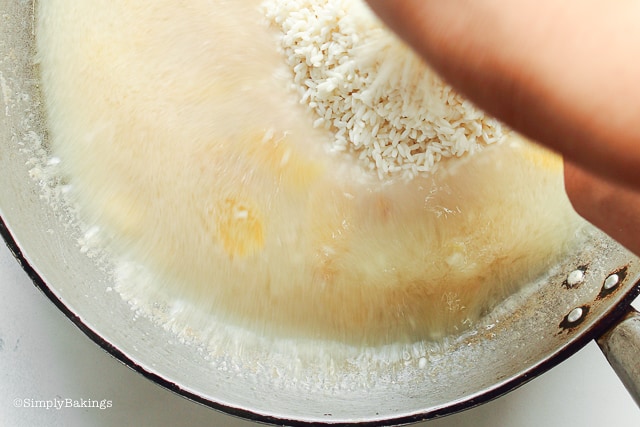
Remove from heat and allow to slightly cool:
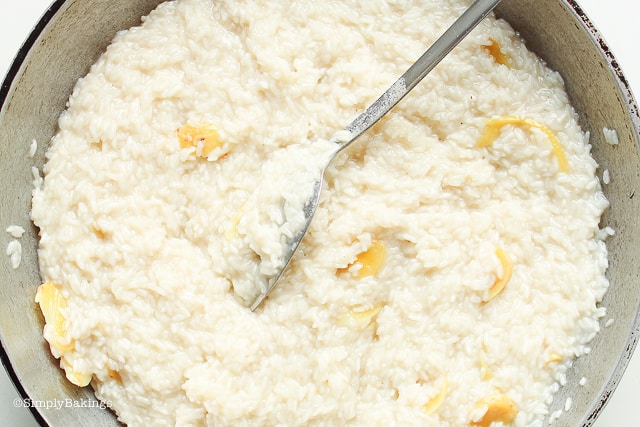
Measure out about 80 grams of the rice mixture and place on the banana leaf, and roll into logs. Roll banana leaves tightly around the rice to form a log and fold both edges to seal. Repeat the steps until all the rice mixture is prepared:
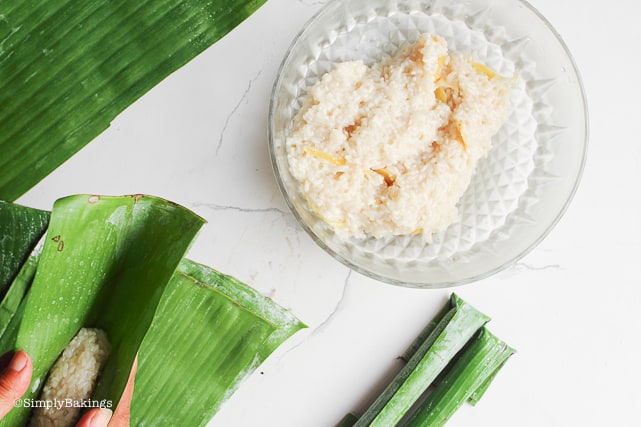
In a large pot, arrange all the folded suman and add 1.5 liters of water. Bring it to a boil and reduce it to a simmer and steam for 45 minutes:
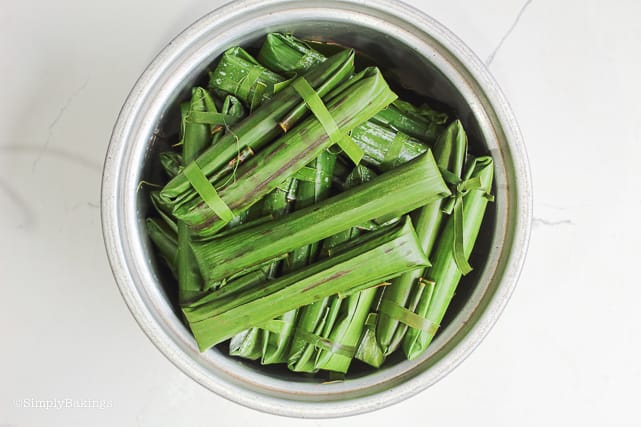
Carefully remove the suman and allow it cool and eat with a ripe mango!:
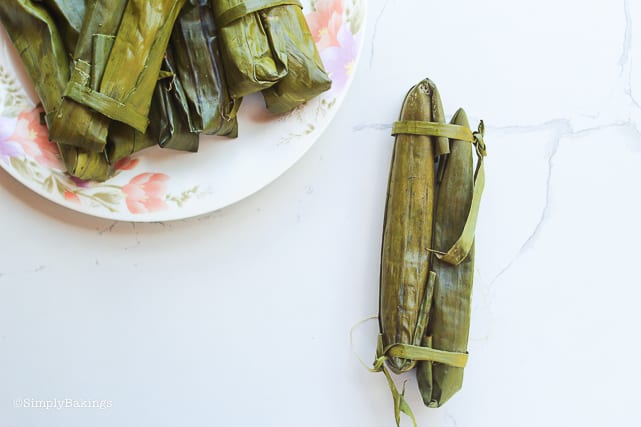
Frequently Asked Questions:
It's typically eaten by unwrapping the banana leaf, dipping it in coconut caramel sauce, and enjoying it with a cup of coffee or tea.
Yes, sweet rice is the same as malagkit or glutinous rice.
Malagkit is a type of rice commonly known as glutinous rice or sticky rice, which is different from regular rice.
Suman should be stored in an airtight container at in the fridge since it's cooked with coconut milk.
Although traditionally made with banana leaves, suman can be substituted with other leaves or even parchment paper if necessary.
Suman Malagkit
Ingredients
- 1 kg glutinous rice
- 1.5 liters coconut milk
- 100 g ginger thinly sliced
- 3 cups water
- ¼ kg white sugar
- 2 tbsp salt
Instructions
- Rinse the rice until water is clear and then set aside.
- In a large saucepan or large wok, add the coconut milk, ginger is and bring the mixture to a boil, then reduce to a simmer. Stir continuously until milk solids separate from the coconut milk.
- Next, add water, sugar, salt and bring to a quick boil and then reduce to a simmer for 3 minutes.
- Add the rice and continue mixing on low heat until the water has been absorbed, about 10 minutes. Remove from heat and allow to slightly cool.
- Measure out about 80 grams of the rice mixture and place on the banana leaf, and roll into logs. Roll banana leaves tightly around the rice to form a log and fold both edges to seal. Repeat the steps until all the rice mixture is prepared.
- In a large pot, arrange all the folded suman and add 1.5 liters of water. Bring it to a boil and reduce to simmer for 45 minutes.
- Carefully remove the suman and allow it cool.


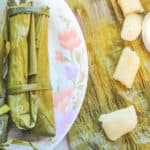
D Jonex says
This looks very good! Have you ever made puto bumbong? I think that was a steamed gelatinous rice (made with ube & cocoonut milk) dish too. I remember it being made about the time people began putting up their parols.
I've bookmarked your blog, as I am always on the lookout for good Filipino recipes. I loved my time living in the Philippines and the fresh, delicious food. (If you have a good recipe for pinakbet, please share!)
Lainey says
Hello there,
Thank you so much for visiting my blog and for your kind words! I really appreciate it. I haven't tried making the puto bumbong but hopefully I can make it someday. Thanks for the suggestion.
I also love Philippines, the foods and beautiful places are just amazing. I have here my Pinakbet recipe. Please check out this link: https://simplybakings.com/pinakbet-vegan-vegetarian-recipe/
I hope you will like it too. Enjoy!
FERNANDO SANTIAGO says
This should be cook by steaming rather than submerged in boiling water to avoid sugginess of your suman.
Lainey says
Hi Fernando,
Yes, steaming works too. Thank you for sharing!
Jaidee says
Hi thanks for sharing your recipe they can be hard to pry out of people lol - How can you tell when the milk solids have separated from the coconut milk?
Lainey says
Hi Jaidee, You can tell when the milk solids have separated from the coconut milk when you see a clear distinction between the thick, creamy coconut milk and the watery liquid that separates out. I hope this helps and sorry for the late reply!